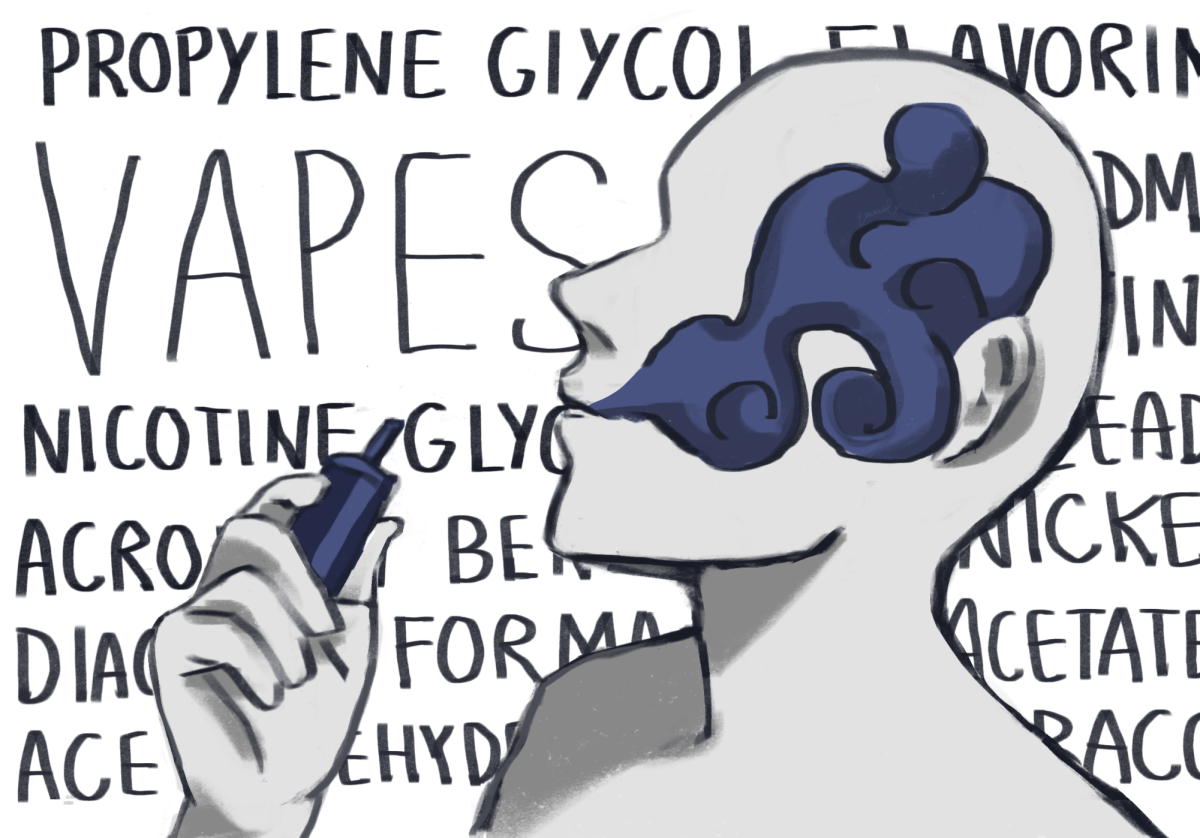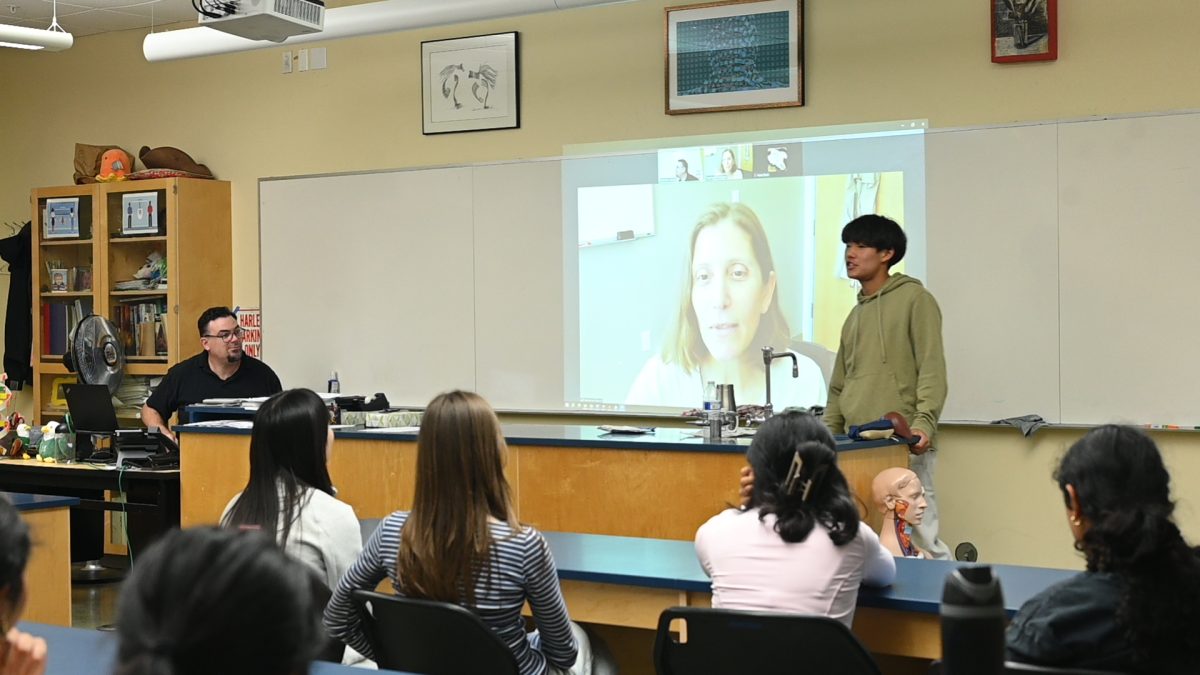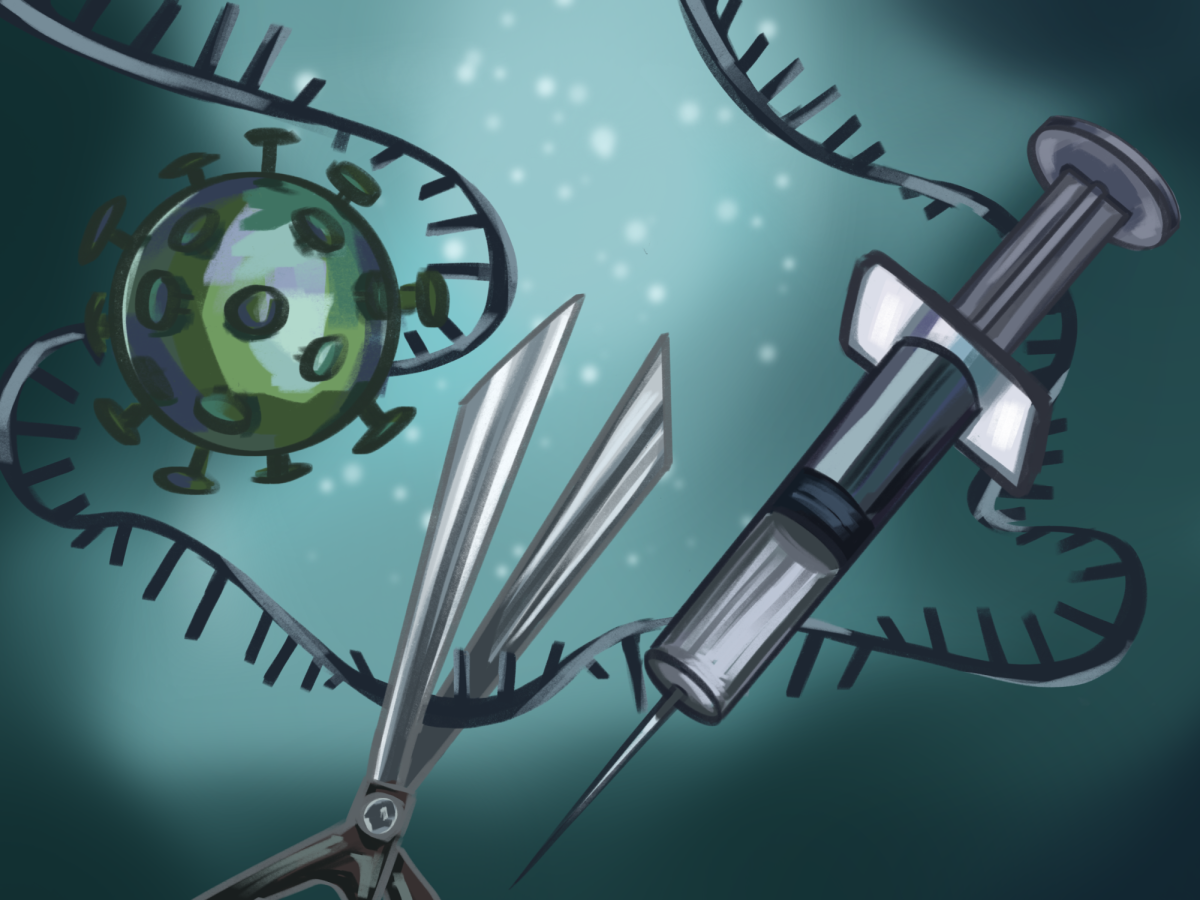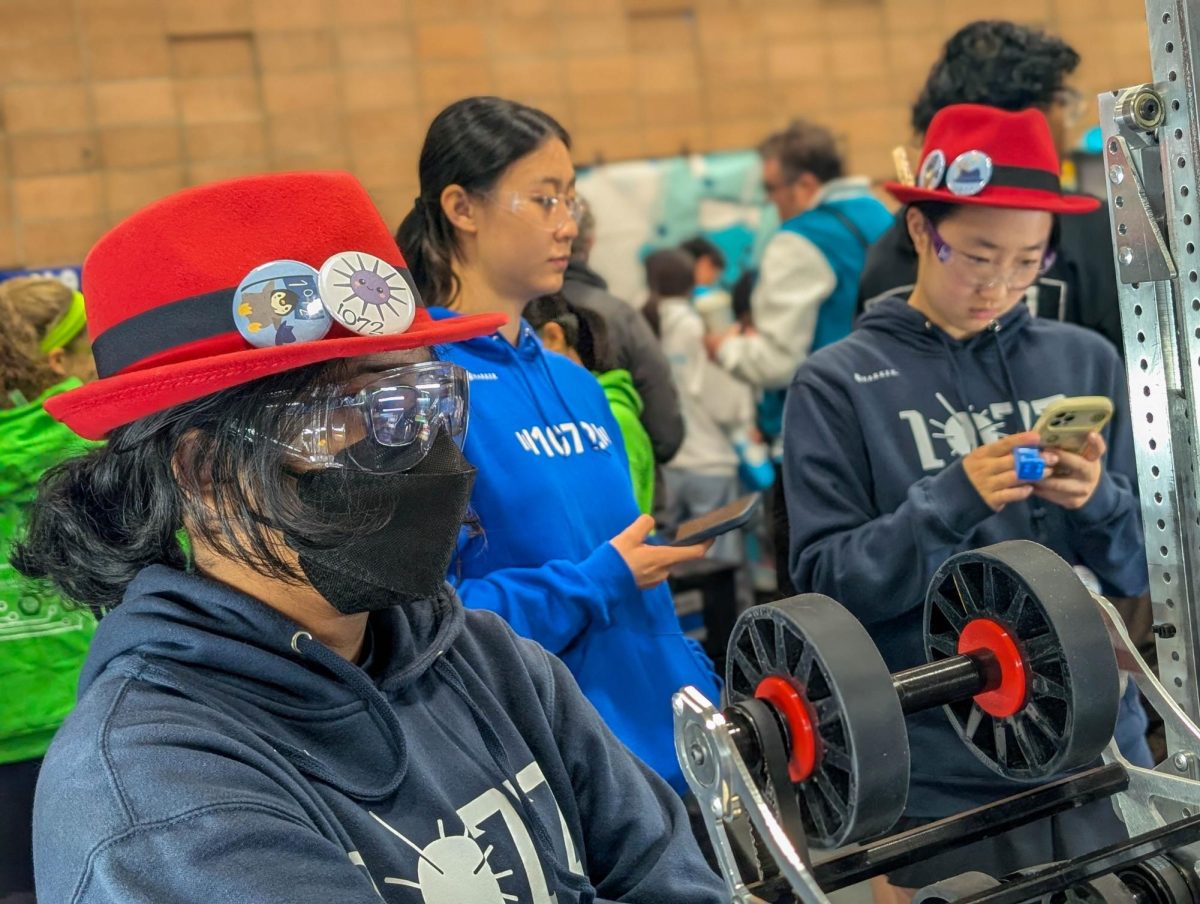A recent decline in vaping among younger generations hints toward a broader discussion surrounding the ethics and health implications of vaping and e-cigarette production.
In 2024, studies from the Food and Drug Administration and Centers for Disease Control revealed a decrease in youth use of e-cigarettes and nicotine products. 2.25 million middle and high school students reported using a tobacco product, compared to the 2.80 million reported teen users in 2023.
Student Diversity Coalition leader Ariana Gauba (12) noted that social media serves as a platform for promoting vaping.
“Social media definitely glorifies vaping, normalizing it to teenagers and presenting it as a way to cope with stress or be happier,” Ariana said.
Across TikTok and Instagram, promotion of e-cigarette products occurs through social media influencers as well as ads. These promotions can take the form of casual, lifestyle-oriented content, making vaping appear trendy and socially acceptable. Influencers are often paid by companies to promote their products, and Instagram contains roughly 18,000 profiles solely dedicated to promotion of vaping.
Ariana also voiced concern over the environmental impacts of e-cigarette technology, emphasizing the challenges that surround the proper discarding of vapes today.
“In terms of the environment, I think that many people, especially teenagers, don’t really have a way of disposing [of] their vapes,” Ariana said. “It comes from a place of ignorance or lack of access to hazardous waste centers.”
Improper disposal of vapes can contribute significantly to environmental damage. Disposable vapes contain lithium-ion batteries, plastics and nicotine salts, all of which are harmful to ecosystems when discarded improperly. According to the U.S. Public Interest Research Group, lithium mining for these batteries depletes finite resources and damages ecosystems, while plastics and chemicals from vapes add to pollution when they end up in landfills or waterways.
Student athlete Gia Emelie (12), a member of the varsity soccer team and an active weight-lifter at Harker’s weight room, commented on the disastrous impacts of vaping on health, especially on people who are involved in athletics.
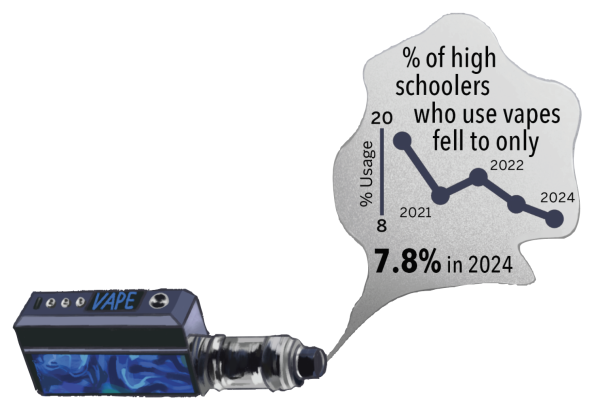
“As an athlete, I will not put anything in my body that can interfere with my health,” Gia said. “Vaping, especially, is harmful to the lungs and liver, which could reduce endurance and stamina.”
Vaping’s most detrimental human impact comes in the damage it inflicts upon the lungs. Inflammation, injury, and scarring are the result of the chemical diacetyl, present in many e-cigarette products. In addition to lung damage, the nicotine exposure that e-cigarettes present damage brain development, an especially concerning impact for students.
However, the impact of vaping is not limited to the body — it is tied to a global system of resource extraction and labor. From the lithium in vape batteries, sourced through environmentally damaging mining and labor practices, to the plastic waste accumulated in landfills and waterways, vaping perpetuates a cycle of harm that extends beyond the user.
Biology teacher Eric Johnson stressed the importance of understanding the far-reaching consequences of vaping. They encouraged students to think beyond the immediate health risks and consider the broader ethical and environmental implications of their choices.
“I think being educated is so important,” Johnson said. “If I introduce this consumerism into my life, I’m now part of the large group of people all over the world that don’t understand that every time I vape, it’s connected. My vape over here in Silicon Valley is connected to labor in Africa, to mining in Ecuador. That education pipeline has to be born.”









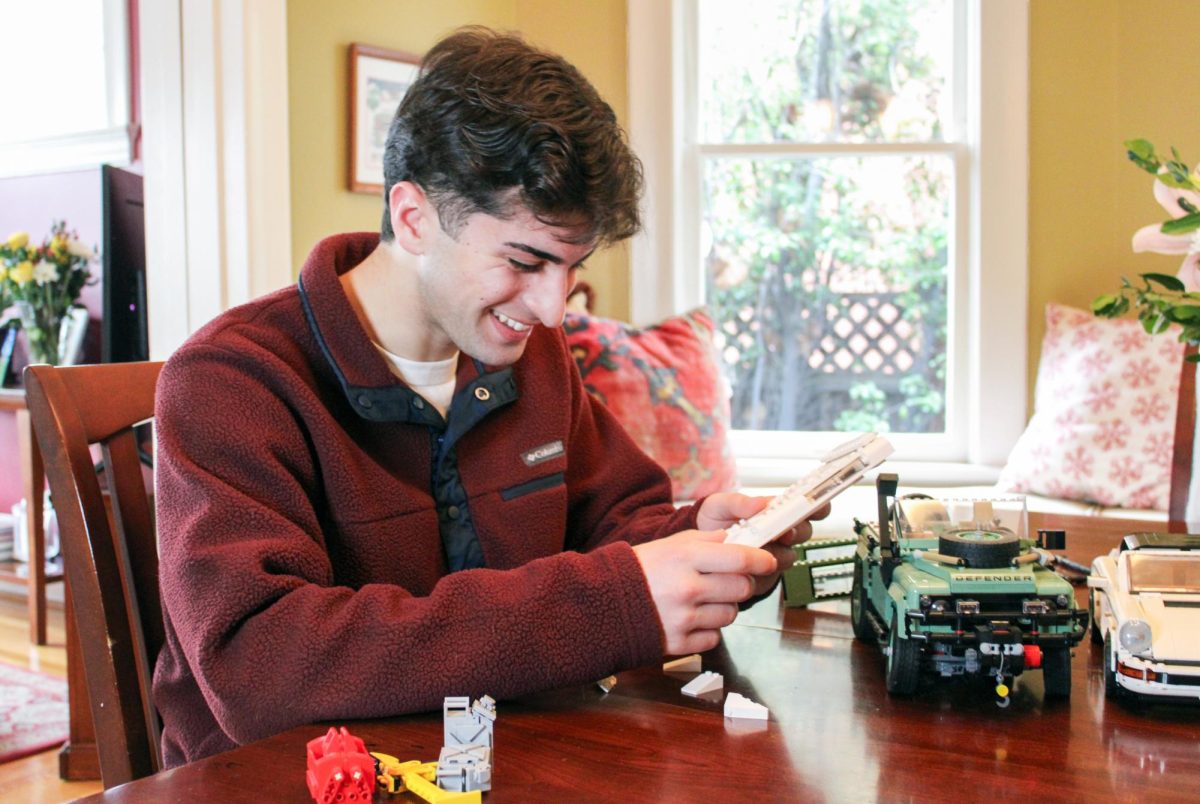






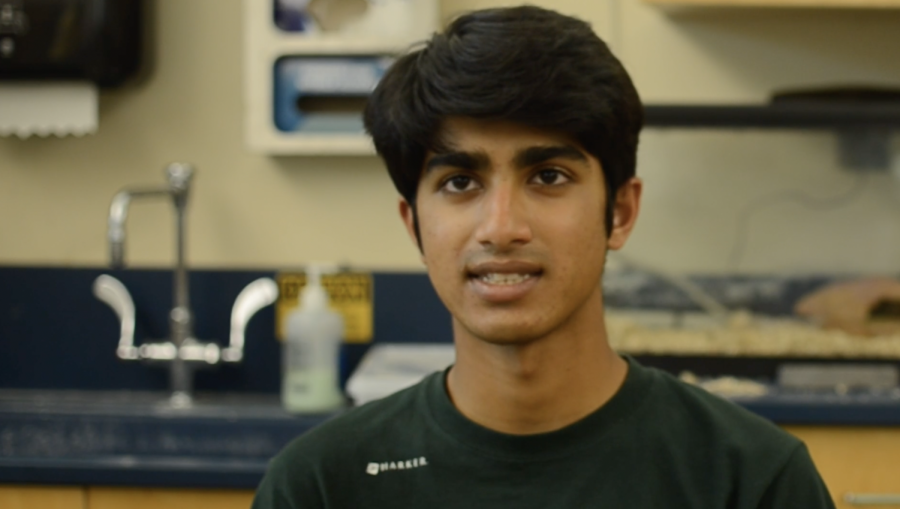
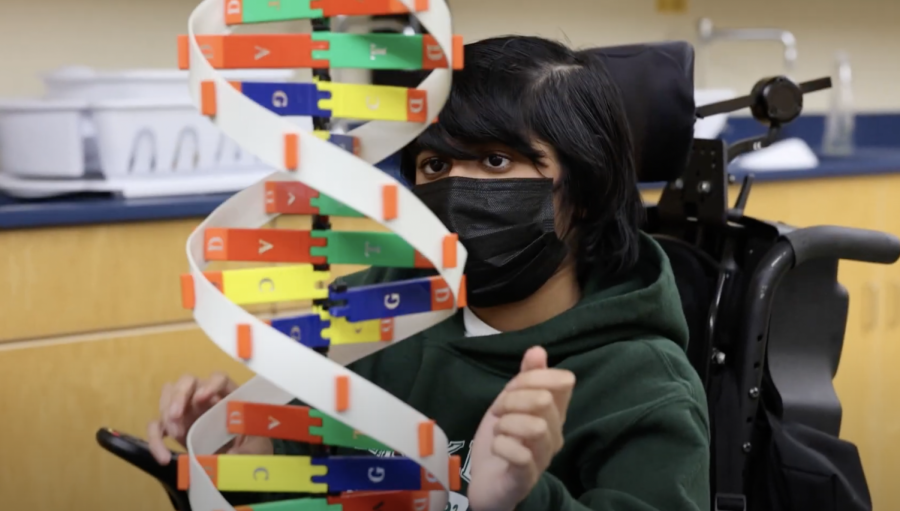
![“[Building nerf blasters] became this outlet of creativity for me that hasn't been matched by anything else. The process [of] making a build complete to your desire is such a painstakingly difficult process, but I've had to learn from [the skills needed from] soldering to proper painting. There's so many different options for everything, if you think about it, it exists. The best part is [that] if it doesn't exist, you can build it yourself," Ishaan Parate said.](https://harkeraquila.com/wp-content/uploads/2022/08/DSC_8149-900x604.jpg)




![“When I came into high school, I was ready to be a follower. But DECA was a game changer for me. It helped me overcome my fear of public speaking, and it's played such a major role in who I've become today. To be able to successfully lead a chapter of 150 students, an officer team and be one of the upperclassmen I once really admired is something I'm [really] proud of,” Anvitha Tummala ('21) said.](https://harkeraquila.com/wp-content/uploads/2021/07/Screen-Shot-2021-07-25-at-9.50.05-AM-900x594.png)







![“I think getting up in the morning and having a sense of purpose [is exciting]. I think without a certain amount of drive, life is kind of obsolete and mundane, and I think having that every single day is what makes each day unique and kind of makes life exciting,” Neymika Jain (12) said.](https://harkeraquila.com/wp-content/uploads/2017/06/Screen-Shot-2017-06-03-at-4.54.16-PM.png)






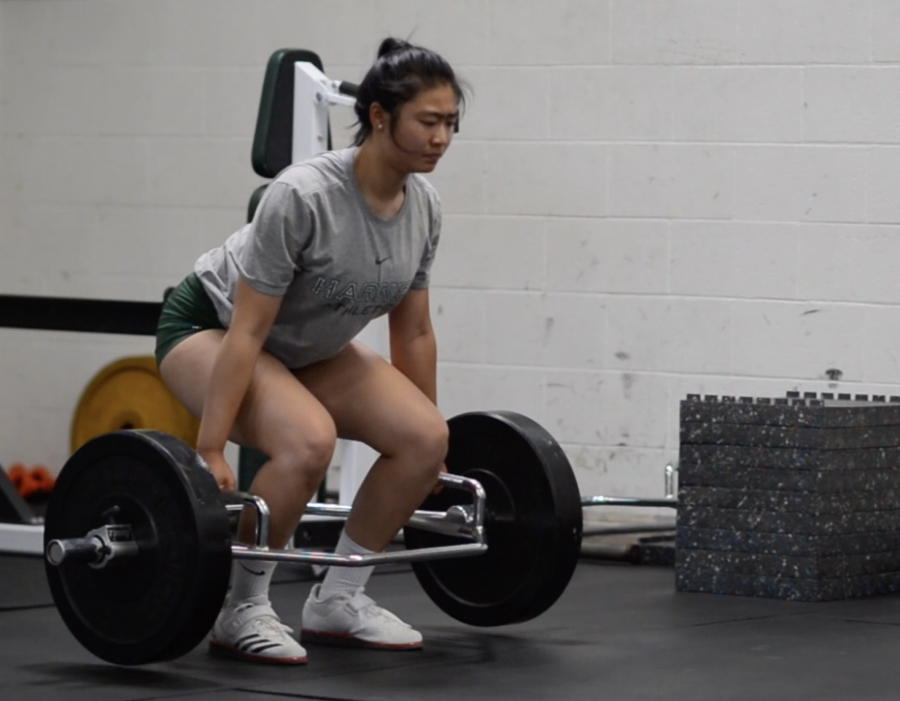

![“My slogan is ‘slow feet, don’t eat, and I’m hungry.’ You need to run fast to get where you are–you aren't going to get those championships if you aren't fast,” Angel Cervantes (12) said. “I want to do well in school on my tests and in track and win championships for my team. I live by that, [and] I can do that anywhere: in the classroom or on the field.”](https://harkeraquila.com/wp-content/uploads/2018/06/DSC5146-900x601.jpg)
![“[Volleyball has] taught me how to fall correctly, and another thing it taught is that you don’t have to be the best at something to be good at it. If you just hit the ball in a smart way, then it still scores points and you’re good at it. You could be a background player and still make a much bigger impact on the team than you would think,” Anya Gert (’20) said.](https://harkeraquila.com/wp-content/uploads/2020/06/AnnaGert_JinTuan_HoHPhotoEdited-600x900.jpeg)

![“I'm not nearly there yet, but [my confidence has] definitely been getting better since I was pretty shy and timid coming into Harker my freshman year. I know that there's a lot of people that are really confident in what they do, and I really admire them. Everyone's so driven and that has really pushed me to kind of try to find my own place in high school and be more confident,” Alyssa Huang (’20) said.](https://harkeraquila.com/wp-content/uploads/2020/06/AlyssaHuang_EmilyChen_HoHPhoto-900x749.jpeg)



